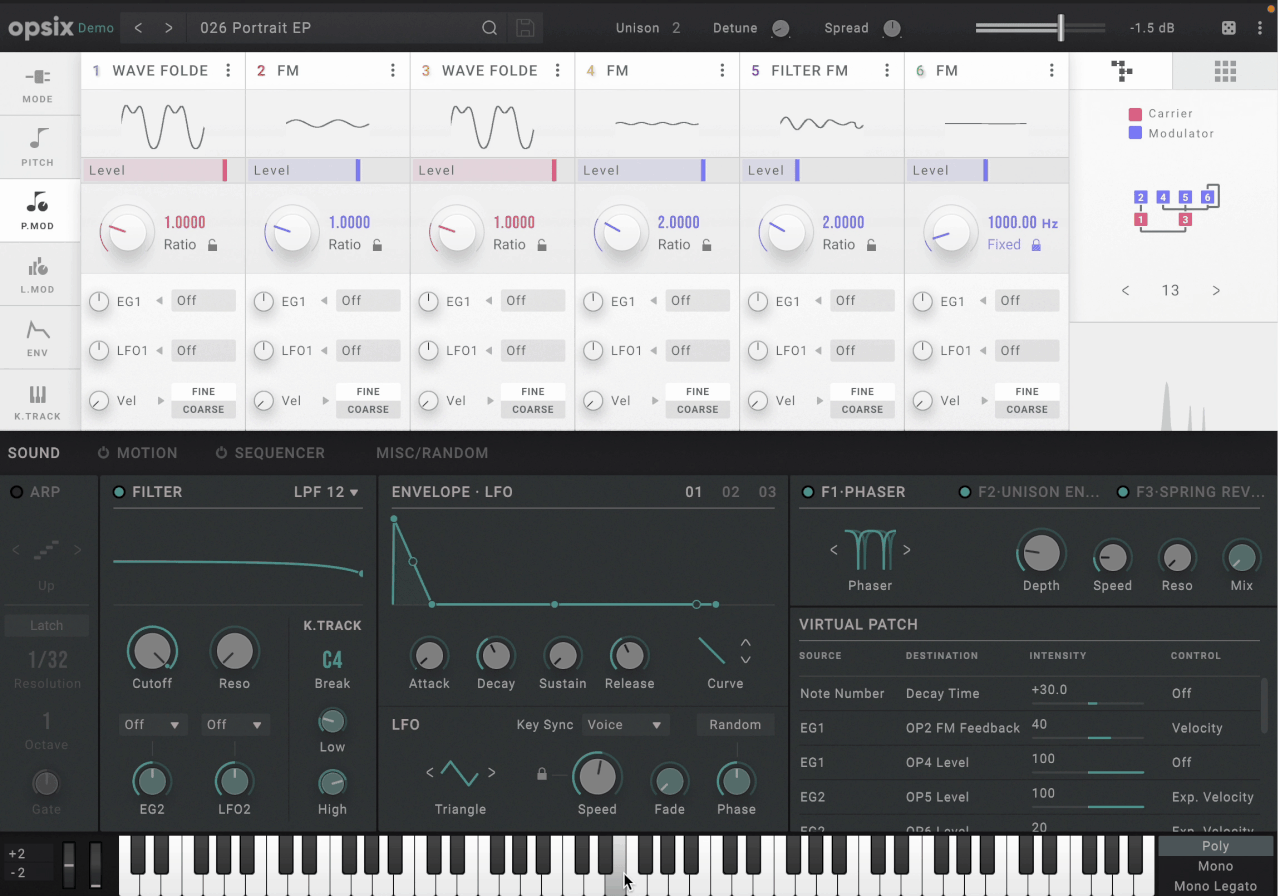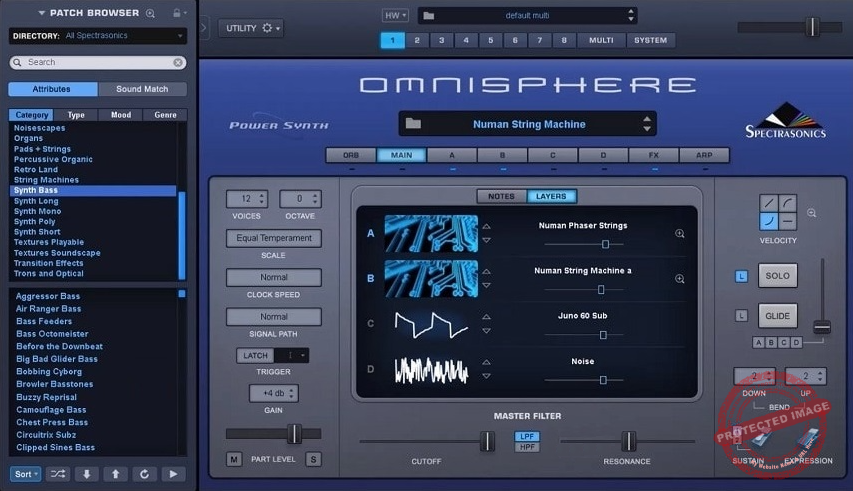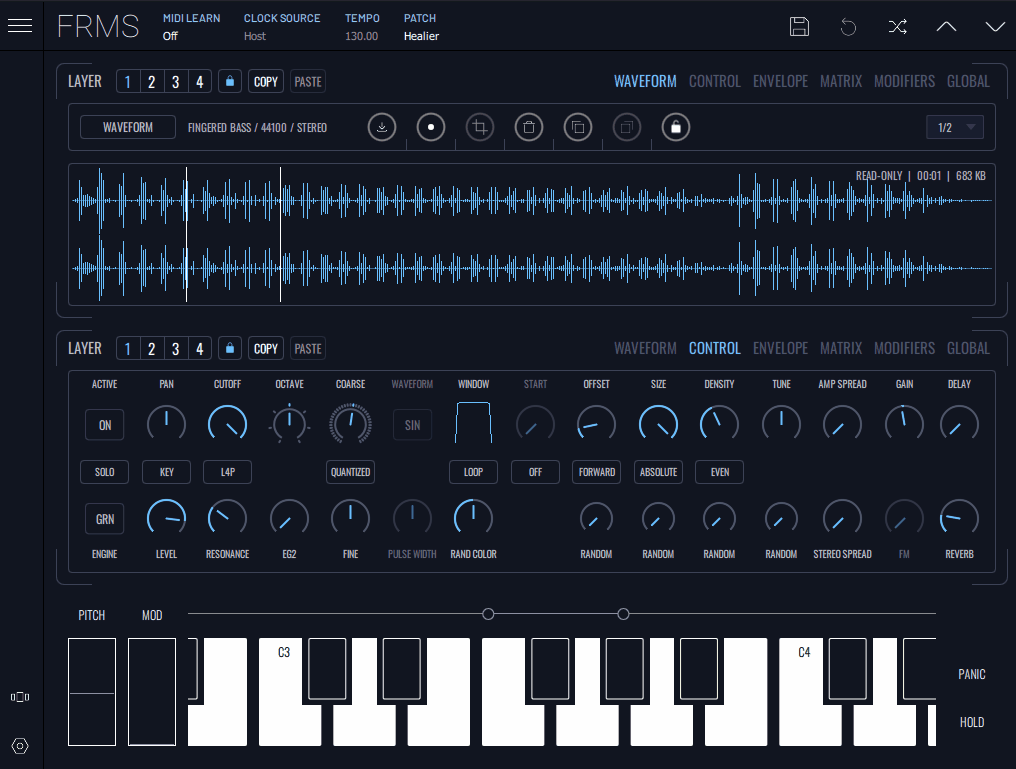In this article, we sail through the most versatile synth plugins out there for you to craft anything from soaring leads to lush atmospheres and floor-shaking basslines.
If you are like me, you have dreamt at some point of a synth plugin that can do it all, from lead and bass to pads and FX, maybe even coffee, if you ask nicely. But, finding that versatility is like looking for a needle in a haystack. Well, maybe a neon-lit needle in a haystack full of lasers and wobbly basslines.
Jokes aside, the modern producer’s toolkit is always overloaded with choices. There are different synths for big pads, aggressive bass lines, vintage analog vibes, weird noises, and more. But, thanks to advanced technology, now there are ones that can handle all those roles in one unit. Here comes the world of versatile synth plugins, the Swiss Army knives of sound design.
These bad boys can do anything from leads to lush atmospheres, making you wonder “What’s next?”. So, in this list, I will share some of my favorite synth plugins that are super flexible, fun, and ready to push the limits of your creativity. Whether you’re a bedroom producer or a studio wizard, these plugins will give you the tools to experiment, create, and maybe even accidentally stumble on your next big hit. Let’s get into it!
1. UVI Falcon 3
The first synth to come to my mind regarding versatility is the Falcon 3, the Swiss Army Knife of sound design, packed with oscillators, effects, and sequencing tools that can handle literally anything you throw at it.
I love how Falcon 3 feels like it is made for producers who want no limits. Its deep synthesis capacity with Subtractive, Wavetable, Sample-Based, Granular, FM, Additive, Phase Distortion, Physical Modeling, Formant, and more combined with Advanced Sample Engines with multi-fx offers so much that you can get dizzy.
The interface is the first suspect that catches the attention as it is a bit overwhelming. Well, it’s pretty normal with so many features, to be honest. This is not your plug-and-play style synth but once you get the hang of it, you realize, actually, everything is laid out logically and beautifully.
The modular design allows you to layer sounds, effects, and modifiers intuitively like you are in the process of a masterpiece. I really like the revamped browser in the latest 3.1 update, as it feels like a sonic library in my pocket. Everything is tagged, organized, and easily searchable, saving so much time in complex workflows.
- 23 Oscillator Types
For me, the standout feature here is the versatility of the oscillator types. Through the years, I had my experience with synths with one or two synthesis styles, but this one, crushes it with 23 oscillator types, including wavetable, granular, virtual analog, FM, and even physical modeling.
Want plucky strings? Done. Airy harmonic resonances? Okay. My favorite is the Haromic Resonator oscillator, as it works wonders when adding a unique texture to cinematic soundscapes.
- 100+ Onboard Effects
Another great aspect is the depth of the effects library, which has over 100 effects. Distortions, delays, reverbs, and even quirky tools like the Opal optical compressor give you endless possibilities for shaping your sound.
My favorite here is the Dispersor effect, which adds unpredictable but gorgeous transient textures that are great for glitchy beats and ambient layers.
- Advanced Sampling Engine
A highlight is the Advanced Sampling Engine, which makes sampling more than just dragging and dropping files. The time-stretching, granular processing and pitch-shifting capabilities are over the roof.
You can really get creative thanks to this feature. For instance, I once transformed a random field recording of birds into a haunting pad with granular synthesis easily. It is the kind of tool that gets you started without any specific sound in mind and makes you land in unpredictable realms.
- MPE and MIDI Goodness
For those with MPE controllers, this plugin can be your best friend as the MIDI Polyphonic Expression (MPE) support makes everything feel more dynamic and expressive. You can use MIDI scripting features to generate algorithmic melodies, as it’s a real playground for experimental music.
- Multi-Channel Mixing and Surround Sound
The multichannel and surround sound support can be handy for creating immersive audio. Especially if you are into VR or gaming projects, this can be a game-changer tool for spatial audio design.
On the downside, I must say Falcon 3 can be intimidating and overwhelming for beginners as well as producers who are not familiar with complex synths. I think the color coding is lacking in the GUI, and it makes navigation harder with a lot of muted greys. But, on the bright side, if you are new to sound design, the templates really help.
If you’re a producer who loves experimenting and pushing boundaries, UVI Falcon 3 is a must-have. Whether you’re working on electronic bangers, cinematic scores, or experimental soundscapes, this synth has your back.
UVI Falcon 3 comes in standalone, VST, VST3, AAX, and AU formats for macOS and Windows users.
2. KORG Opsix Native

If there’s a synth plugin that takes the “what if?” of sound design to a whole new level, it’s Korg opsix Native.
What I really liked about Opsix Native was the reimagination of FM synthesis without the complexity of traditional FM synths. It has that beautiful 80s vibe with features beyond that, blending Subtractive, Semi-Modular, Analog, Waveshaping, Additive, and FM synthesis into one versatile sound-design powerhouse.
I know that FM synths are often scary with all those confusing algorithms and operator settings but the first thing you will notice is how the Opsix Native makes that accessible with its clean and intuitive interface.
The 6-operator layout follows the footsteps of the original hardware with color-coded Carrier and Modulator controls. Plus, the real-time oscilloscopes and spectrum analyzers help you with instant feedback on what’s going on with your sound, leaving no place for guesswork.
- Altered FM Synthesis
As Korg names it, “Altered FM” is a truly fantastic design. You have 6 operators that can each be set to FM, Ring Mod, Filter FM, Wavefolder, or even Effect mode, opening the doors to a super range of sonic possibilities.
The Wavefolder mode is pretty fun. Try adding some rich, distorted character to synth leads and push as much as you can; you will be surprised how wild you can get without sacrificing musicality.
- Intuitive Algorithm Editor
The Algorithm Editor is another standout feature as it comes with 40 pre-set algorithms with a custom grid editor, where you can map your own routing. You can do crazy things like flipping the modulation path upside down. It feels like building your own synth architecture, while the visual feedback is pretty handy when experimenting.
- Gorgeous Filters and Effects
I also enjoyed using the filters section packed with 12 modes, including an MS-20-inspired low-pass filter that sounds great. Combined with 30 onboard effects, including effects like Shimmer Reverb or Grain Shifter, you can create everything from lush atmospheres to gritty, experimental textures.
- Motion and Polyphonic Sequencers
The unit also features a 16-step sequencer, which offers more than just basic patterns, as it lets you modulate parameters to create deep, evolving sequences. I liked the Motion Sequencer for crafting evolving dynamic textures. It gave results that felt alive, almost like analog hardware in a jam session.
- Randomization Done Right
While I enjoy the unpredictability, I don’t like chaos for chaos’s sake. But here, the randomization feature is designed wisely, as it allows you to choose which parameters to randomize. So, it’s easy to inject a bit of unpredictability while staying in control. I’ve used it to create variations on bass patches, and it’s been a lifesaver when I hit a creative block.
Coming to the quirks, I think opsix Native’s modulation system is not the best and feels a bit clunky. It is powerful but hard to use, in my opinion. Mapping controls to a MIDI controller also takes too much time, while syncing the arpeggiator with your DAW is also a bit complex.
Opsix Native is great for anyone ready to dive deep into sound design for FM tones, modern electronic textures, or cinematic soundscapes.
Korg opsix Native comes in VST3, AU, AAX, and standalone formats for macOS and Windows users.
3. Arturia Pigments 6

For those looking for a synth plugin that’s equal parts power, flexibility, and sheer joy to use, Arturia Pigments 6 might just be the one.
With its combination of Sample-Based, Granular, Wavetable, Harmonic, and Virtual analog synthesis with an intuitive design added, Pigments 6 is probably as user-friendly as a versatile synth plugin can get.
The general consensus on this unit is that it makes sound design feel less like quantum physics with its approachable interface. It has complex engines, but you don’t feel that when using it, thanks to the logically laid out workflow. The visual feedback is also on point, with graphical representations of the most important modules.
- 4 Dynamic Sound Engines
This one feels like 4 synths in just one. The Wavetable Engine is a real beast with its ability to morph between 160+ wavetables or import your own. The Harmonic Engine is another monster to create lush, evolving pads by fine-tuning individual harmonics.
Virtual Analog Engine is great for delivering analog retro flavor with 3 oscillators and the Sample & Granular Engine lets you go through hundreds of samples or import your own to render your sound into a detailed, granular synth patch at the touch of a button.
- Granular Synthesis
I think the Sample & Granular engine needs its own section, as it is where things get beautifully weird. It allows you to take samples such as your voice, a field recording, or a drum loop and manipulate it as you like by stretching, warping, and scattering it into something truly unique.
- Endless Modulation Possibilities
Another star here is the drag-and-drop modulation system. Trying to use an LFO to control filter cutoff? Simply drag it over, and done. Want random generators to spice up the sound? Easy. I also liked the color-coded workflow here as it makes the modulation process easy to track so that even the most complex patches get easier to follow.
- Studio-Grade Effects
The Pigments offers 18 FX types with Shimmer Reverb, Tape Echo, Multiband Compressor, and more. You can stack 3 effects per bus, tweak them endlessly, and even modulate their parameters. I really liked the Shimmer Reverb, which gives a plucky lead some cinematic depth, and it transformed the vibe of the whole track
- Generative Sequencer and Arpeggiator
If you want to inject movement into your patches, you can also use the next-level tools like the Sequencer and Arpeggiator. Extra features like randomization, scale locking, and polyrhythmic patterns increase the versatility here to create evolving sequences that sound alive.
Well, the only downside here is the Pigments’ price tag. But the frequent sales make it way more accessible, and when you factor in free updates like this one, it’s a solid investment.If you’re serious about sound design or just want a synth that can handle anything you throw at it without having that steep learning curve, Pigments 6 is a good choice.
Pigments 5 comes in VST, AAX, and AU formats for macOS and Windows users.
4. Spectrasonics Omnisphere 2

When talking about software synthesizers, Omnisphere 2 is arguably the versatility heavyweight champion.
Well, I can’t hide my admiration for Omnisphere 2, as it comes with the most impressive factory sounds in the known universe while offering high-quality sound design tools. It is more than a simple synth as it is a full-on sound designer’s powerhouse, offering so many sonic possibilities.
The interface is pretty closely designed to the original design and is relatively intuitive and clean. It has a learning curve, which is totally expected with so many features, but you won’t need a PhD in synthesis to figure things out.
12000 presets… Yes, you read right. The unit offers so many presets along with 4500 new ones in the latest version, which means the number will increase with updates. Whether you’re scoring a movie, producing EDM, or just noodling around, this synth has something for every genre and mood with its Sample-based, Granular, Wavetable, and FM engines.
- Hybrid Synthesis Engine
At the heart of Omnisphere 2 lies the hybrid synthesis engine, combining sample-based sounds with advanced synthesis techniques. Each patch is built from two layers, and each layer can use a synth oscillator or a sample-based oscillator. This gives you the flexibility to create anything from lush pads to gritty leads.
- Massive Sound Library
As I said before (sorry for the spoilers earlier; I couldn’t hold myself), this plugin features 12000 presets with 400 DSP waveforms. Crazy right? This is an unmatched variety of sounds that I know. The library has everything from cinematic pads and atmospheric textures to EDM-ready basses and leads. You can easily spend hours exploring the library and sound palette and still find something new every time.
- Granular and Harmonia Engines
The Granular Synthesis Engine is also a powerhouse that helps you create evolving and otherworldy textures. It works by breaking down the audio into tiny grains, which can then be manipulated into unique sounds.
The Harmonia Engine is another standout with its capacity to layer up to four additional oscillators per layer, each with its own pitch, detune, and pan settings. I love this engine as it makes building rich and complex tones pretty easy to experiment with.
- Advanced Effects Engine
The effects section in Omnisphere 2 is a sound designer’s dream, featuring 58 studio-grade effects. From classic reverbs and delays to creative tools like Innerspace and Quad Resonator, the options are endless.
I’ve used the Thriftshop Speaker effect to add gritty lo-fi character to synth lines and the Analog Phaser to bring movement to pads. The ability to modulate effect parameters through the modulation matrix takes this to another level, allowing for dynamic and evolving sound design.
- Multi Mode and Stack Mode
Multi-Mode allows you to layer up to 8 patches, each with its own effects and arpeggiator. This feature is incredible for creating dense, layered sounds or building full compositions within a single instance of Omnisphere.
On the other hand, Stack Mode allows you to split or layer patches across different key ranges, which is great for live performances or creating intricately layered textures.
Omnisphere 2 is probably one of the most versatile tools out there, but there are a few quirks. The lack of a standalone version might disappoint gigging musicians, and the audio import workflow could use more flexibility, like tempo-matching loops.
For me, Omnisphere 2 is the ultimate creative toolkit. If you’re serious about sound design or just want a synth that can do everything, this is the one.
Omnisphere 2 comes in AU, VST, RTAS/AAX formats and is compatible with macOS and Windows.
5 . Imaginando FRMS (Granular, FM, Subtractive, Additive)

FRMS is a hybrid synthesizer that merges granular, FM, subtractive, and additive synthesis into one sleek, modern package – definitely one of those versatile synth plugins!
As a sound designer’s dream, FRMS delivers everything from ambient drones to glitchy, mechanical soundscapes with a creative twist with its unique layering system.
I love this layering system, which can be used with up to four simultaneous layers, each running its own synthesis engine. It really opens up endless possibilities for evolving, complex sounds. The interface? Intuitive and flexible enough to make it ok for experimenting without feeling overwhelmed, but still, you should get used to the workflow.
- Hybrid Synthesis with Layers
The star of the show here is the 4-layer synthesis engine, in which layers can be run in granular, subtractive, or FM synthesis, meaning that you can blend lush pads with gritty textures or create intricate rhythmic patterns.
- Granular Synthesis
And the Oscar goes to…the Granular Synthesis! This is my favorite feature as it allows you to break down the audio into tiny grains to manipulate them in real-time with the built-in waveform library, your own samples, or even live input. The engine is so powerful you can create pretty unique sounds here.
- FM Synthesis with Operator Linking
The FM synthesis engine is where things get wild. FRMS treats its layers as FM operators, with 8 routing modes that let you decide how the layers interact. This flexibility is perfect for crafting metallic, otherworldly tones or intricate harmonic structures. I once linked all 4 layers in FM mode to create a cascading soundscape and it was like sculpting with frequencies.
- Flexible Modulation and Effects
Each layer features a dedicated modulation matrix with envelopes, LFOs, and more. The master filter and built-in delay and reverb effects let you polish your sound with ease. I especially love how the modulation makes patches feel dynamic and alive, perfect for creating evolving pads or pulsing basslines.
- Intuitive Interface
I think the interface also deserves a trophy here, as despite its complexity, FRMS is surprisingly easy to use. The split-panel interface lets you work on two layers or panels simultaneously, making patch creation a breeze.
The only con here is the CPU usage of the plugin. You will need a decent machine to work with it smoothly, especially if you want to have multiple layers active simultaneously. Also, I must say that the live input feature is not supported in all DAWs. So check the official website before deciding.
The hybrid synthesis capabilities here are what makes FRMS incredibly versatile, and the intuitive interface ensures I can dive right in.
FRMS is available as a VST, AU, and AAX plugin for macOS and Windows.

